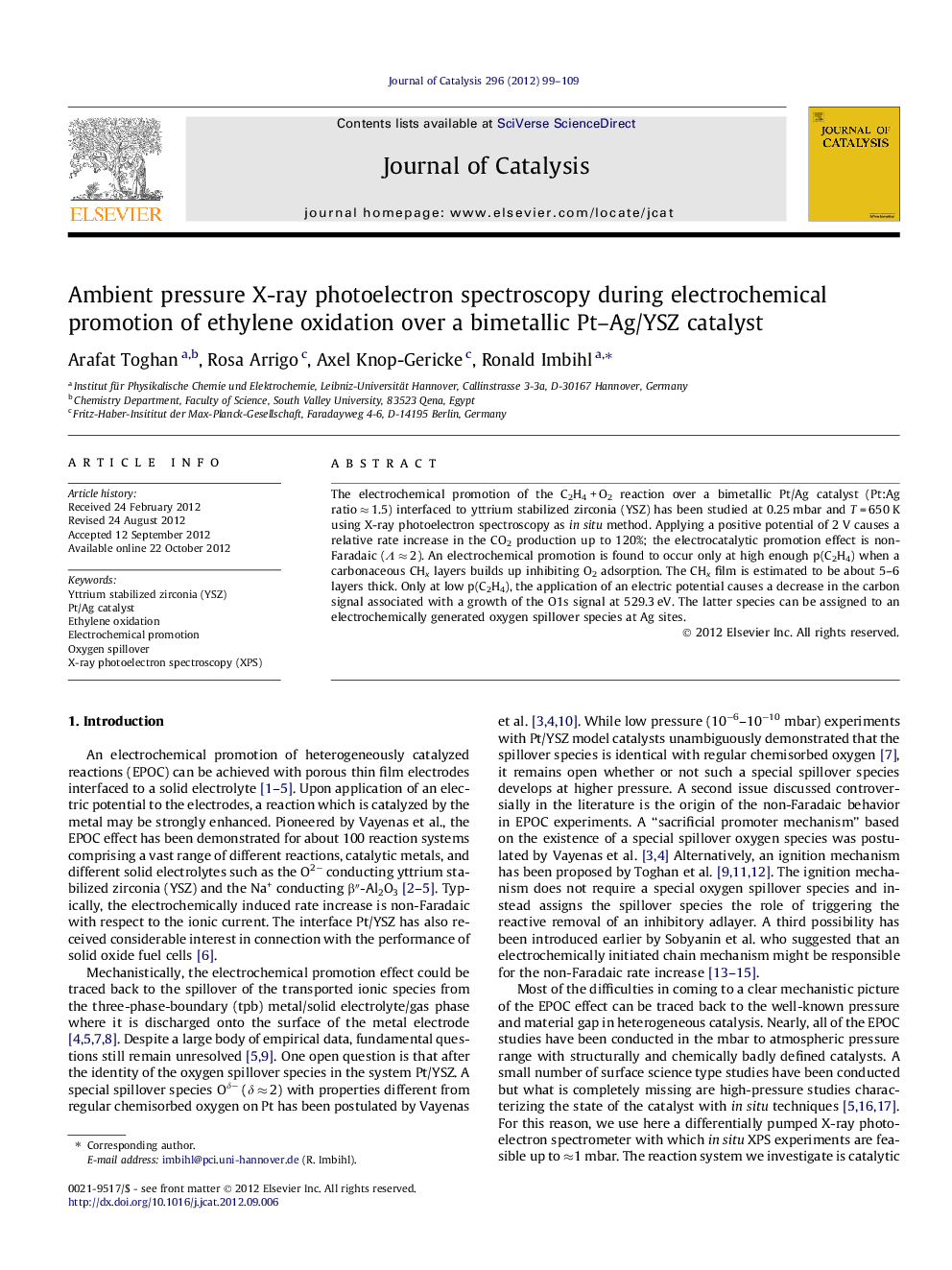| Article ID | Journal | Published Year | Pages | File Type |
|---|---|---|---|---|
| 61335 | Journal of Catalysis | 2012 | 11 Pages |
The electrochemical promotion of the C2H4 + O2 reaction over a bimetallic Pt/Ag catalyst (Pt:Ag ratio ≈ 1.5) interfaced to yttrium stabilized zirconia (YSZ) has been studied at 0.25 mbar and T = 650 K using X-ray photoelectron spectroscopy as in situ method. Applying a positive potential of 2 V causes a relative rate increase in the CO2 production up to 120%; the electrocatalytic promotion effect is non-Faradaic (Λ ≈ 2). An electrochemical promotion is found to occur only at high enough p(C2H4) when a carbonaceous CHx layers builds up inhibiting O2 adsorption. The CHx film is estimated to be about 5–6 layers thick. Only at low p(C2H4), the application of an electric potential causes a decrease in the carbon signal associated with a growth of the O1s signal at 529.3 eV. The latter species can be assigned to an electrochemically generated oxygen spillover species at Ag sites.
Graphical abstractApplication of an electric potential to Pt–Ag/YSZ catalysts in a C2H4 + O2 atmosphere can lead to a significant electrochemical promotion of the catalytic reaction. It is shown that the promotion effect is due to the partial removal of a carbonaceous layer, which poisons the catalytic reaction by electrochemically induced spillover oxygen.Figure optionsDownload full-size imageDownload high-quality image (126 K)Download as PowerPoint slideHighlights► 5–6 Layers thick carbonaceous films form on Pt + Ag/YSZ catalysts in catalytic ethylene oxidation under conditions of ethylene being in excess. ► Electrochemical promotion only under conditions at high p(C2H4) when carbonaceous film is present. ► Electrochemical promotion = partial reactive removal of inhibitory carbonaceous layer by electrochemically induced oxygen spillover. ► Reaction non-Faradaic due to ignition effect.
